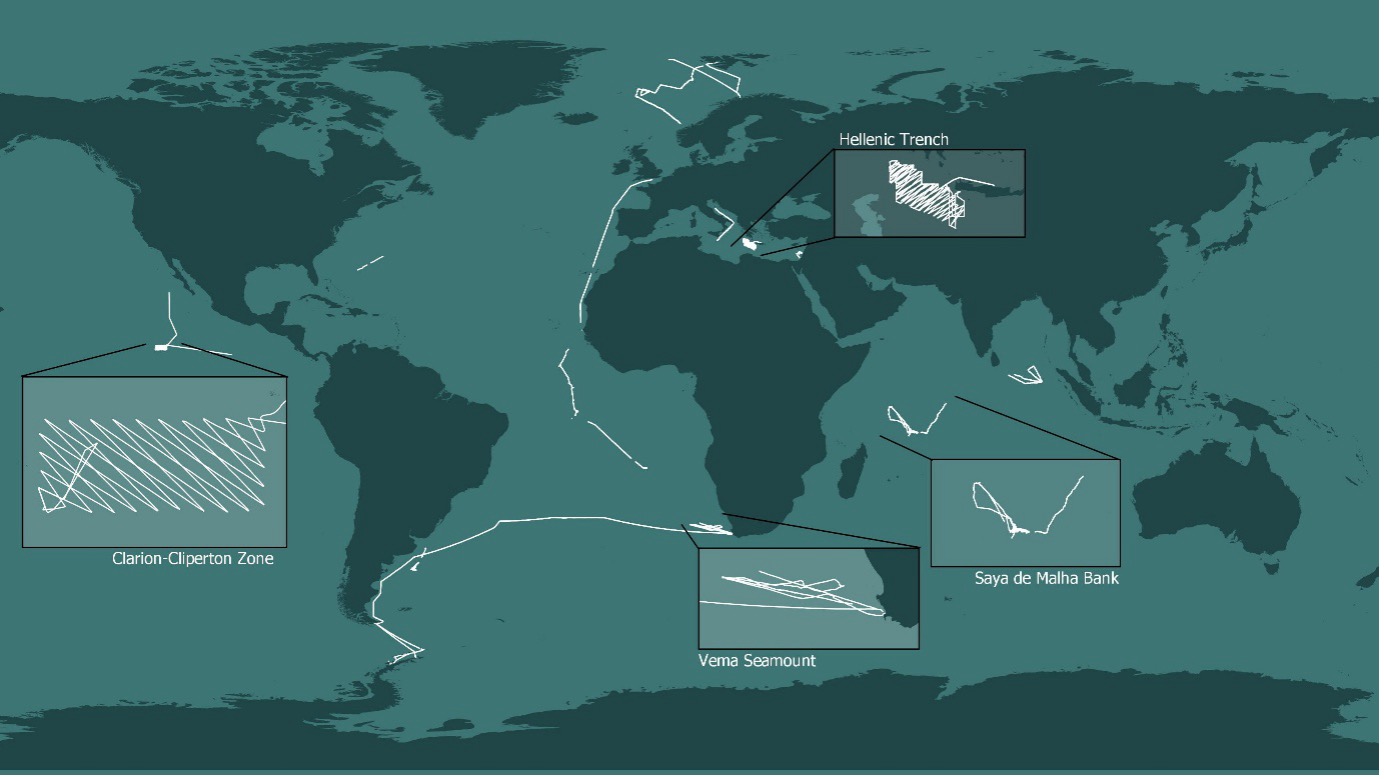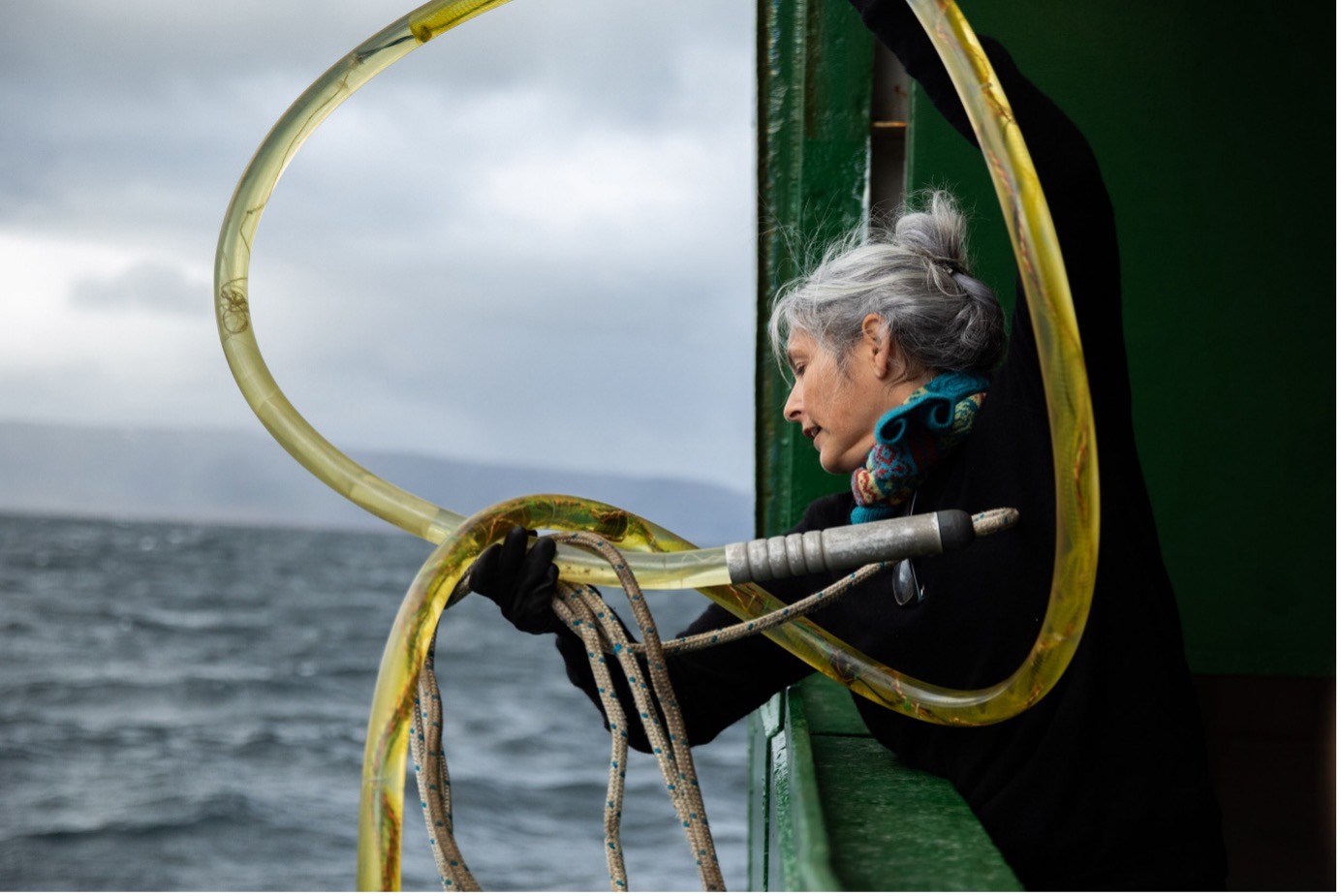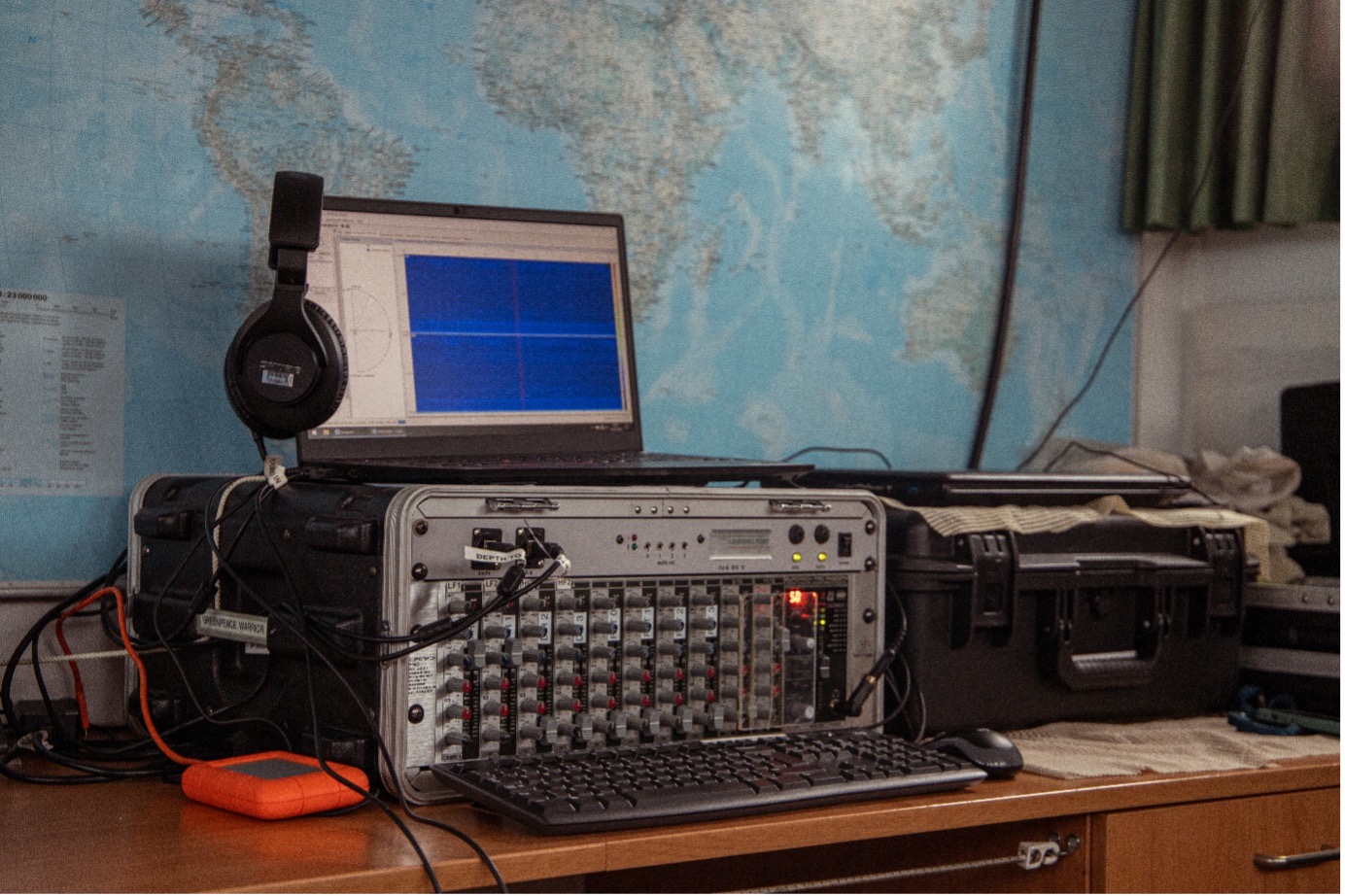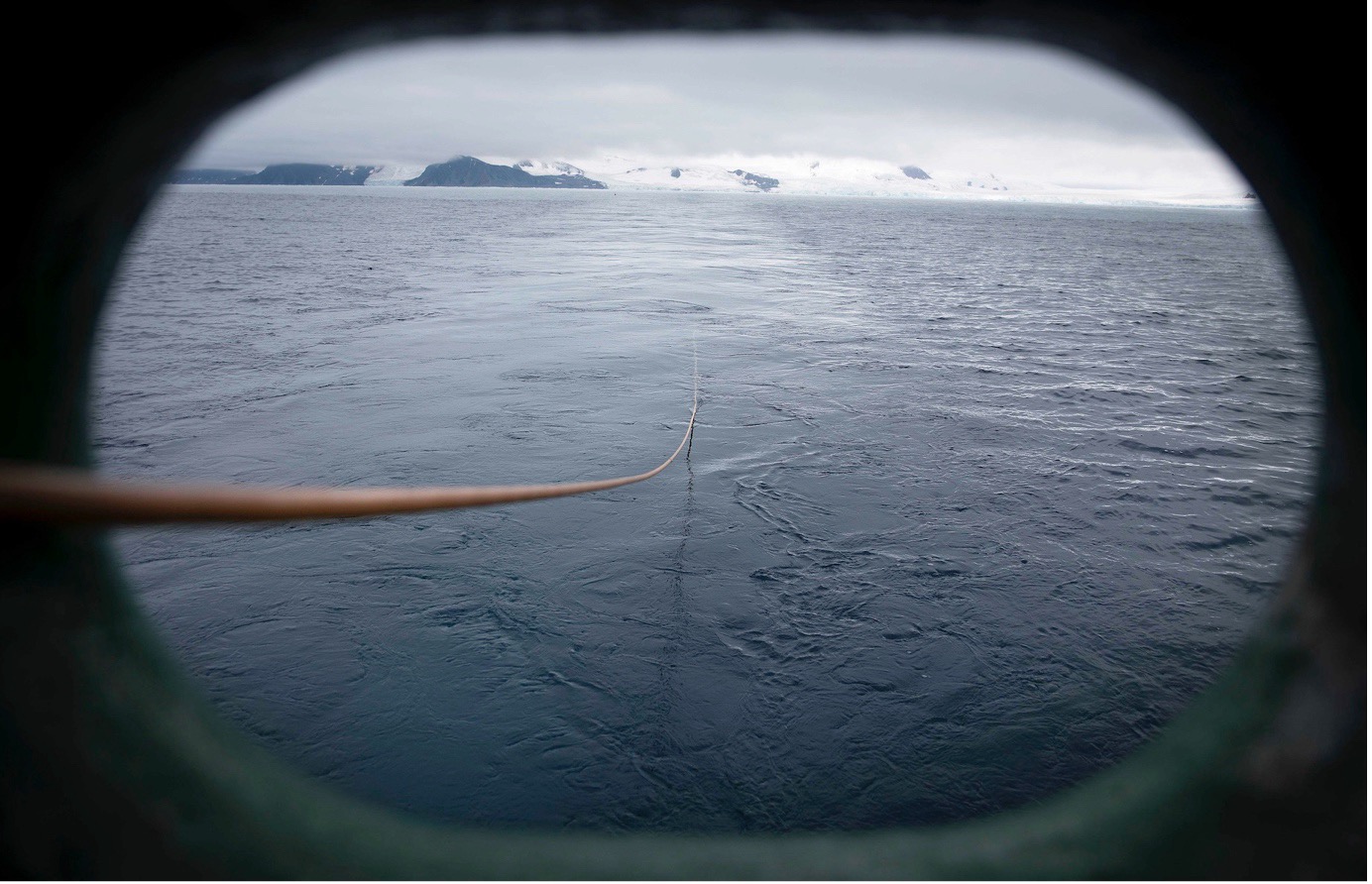PAMGuard and Greenpeace towed array
Introduction
In 2019, Greenpeace deployed their first towed hydrophone from the stern of MY Arctic Sunrise as part of the pole to pole campaign for ocean protection, working with researchers from the University of Exeter, UK (https://www.greenpeace.org/international/story/23898/protect-the-oceans-pole-to-pole/). The pole-to-pole campaign collected over 1,696 hours of acoustic recordings from the Arctic down the Atlantic, and then along to the Westen Antarctic Peninsula.
Since then, ten further surveys have taken place across the globe, across three different Greenpeace vessels (My Arctic Sunrise, SY Rainbow Warrior, and SY Witness) helping to document cetacean diversity, often in poorly studied regions or areas marked for anthropogenic exploitation.

PAMGuard in the field
PAMGuard, running on a standard consumer laptop PC, processed four-channels of data from a towed hydrophone array deployed of the stern of the vessel. Researchers onboard the ships could monitor the incoming sounds for various cetacean species. Monitoring data in real-time with PAMGuard meant some species such as sperm whales could be tracked acoustically during their foraging dives, or by listening out for codas produced at the surface, helping teams onboard find the sperm whales at the surface and take ID photos. Sharing these ID photos with local researchers helps to gain further insights into animal movements (Thompson et al., 2024). All the incoming acoustic data was recorded using PAMGuard so that the data could be reanalysed onshore for cetacean presence.

With over 25 TB of acoustic data collected during the first pole to pole survey, researchers developed a streamlined workflow using PAMGuard to efficiently process large quantities of data collected with a towed hydrophone array (Webber et al., 2022). Since then, this workflow, with some tweaking here and there, has been applied to all the acoustic surveys conducted onboard Greenpeace ships.
Acoustic recordings which could be linked to visually verified single species sighting have been made available online to aid in the development of automated classification algorithms. For example, a Risso’s dolphin click classifier. Resulting data on cetacean occurrence and diversity from these surveys, have been and will continue to be published (e.g. Thompson et al., 2023, Webber et al., 2023, Webber et al., 2025, Young et al., 2025), increasing the pool of knowledge which can be drawn upon to implement conservation measures, or push for further systematic survey effort in poorly studied regions.

Greenpeace is now also trialing the use of drifting vertical hydrophone arrays to better detect more cryptic species such as beaked whales. Beaked whale are known to be particularly sensitive to disturbance from anthropogenic activities. PAMGuard is currently being used to process the data from these drifters while they are being tested.
The ability of PAMGuard to collect and process data in real-time, and it’s efficient post-processing has been crucial to aid researchers during these surveys, facilitating more complete cetacean diversity assessments to be conducted.

References
Thompson, KF., Webber, T., Karantzas, L., Gordon, J., Frantzis, A. (2023). Summer and winter surveys of deep waters of the Hellenic Trench, Greece, provide insights into the spatial and temporal distribution of odontocetes. Endang Species Res 52:163-176 https://doi.org/10.3354/esr01265
Thompson, K.F., Gordon, J., Webber, T., Zuriel, Y., Kobo, K., Tchernov, D. et al. (2024). Threatened cetaceans off the coast of Israel and long-range movement of a sperm whale. Aquatic Conservation: Marine and Freshwater Ecosystems, 34(5), e4155. https://doi.org/10.1002/aqc.4155
Webber, T., Gillespie, D., Lewis, T., Gordon, J., Ruchirabha, T., & Thompson, K. F. (2022). Streamlining analysis methods for large acoustic surveys using automatic detectors with operator validation. Methods in Ecology and Evolution, 13, 1765–1777. https://doi.org/10.1111/2041-210X.13907.
Webber, T., Boisseau, O., Young, K.F., Provost, F., de Vos, A. (2025). Cetaceans and threats of the Ninety East Ridge and high seas of the Indian Ocean. Marine Environmental Research. 107290. https://doi.org/10.1016/j.marenvres.2025.107290.
Webber, T., Lewis, T., Talma, S., et al. (2023). Cetaceans of the Saya de Malha bank region, Indian Ocean: A candidate important marine mammal area. Regional Studies in Marine Science, 66, 103164. https://doi.org/10.1016/j.rsma.2023.103164
Young, K.F., Webber, T., Karantzas, L., Miteva, S., Oakes, G., Santillo, D., Johnston, P. (2025). Threatened cetaceans in a potential deep seabed mining region, Clarion Clipperton Zone, Eastern Pacific, August 2023. Front. Mar. Sci. 12. https://doi: 10.3389/fmars.2025.1511075.